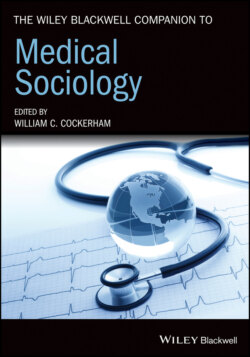Читать книгу The Wiley Blackwell Companion to Medical Sociology - Группа авторов - Страница 14
PREVIOUS SUBFIELD MODELS
ОглавлениеThe establishment of subfields within medical sociology was a major advance in its early development. In the 1950s, Straus (1957) proposed a two-subfield structure that included the sociology of medicine and sociology in medicine. These subfields were important because they (1) organized studies depending on the extent to which they served the interests of sociology vs. medicine and (2) sought to highlight the unique contributions of sociology to the study of health, illness, and medical practice. In the 1980s, Petersdorf and Feinstein (1980) suggested a more elaborate six-subfield model that was still based on sociology’s stance vis-à-vis professional medicine, including sociology in medicine, sociology of medicine, sociology for medicine, sociology from medicine, sociology at medicine, and sociology around medicine. Still others advocated for a sociology with medicine (Bury 1986; Horobin 1985; Levine 1987). Although elaborations on Straus’ original model never really took hold (Cockerham 1983; Hollingshead 1973; Ruderman 1981; Straus 1999; Wardwell 1982), we argue that, after decades of scholarship, the two-subfield model no longer adequately represents our contemporary disciplinary structure or our contributions to the study of health. For example, many medical sociologists no longer define themselves primarily in relation to medicine (whether critical of, or allied with it), and areas of inquiry that have distinct sociological identities have become more prominent (e.g. social epidemiology). For these reasons, we take Straus’ (1957) original concerns with disciplinary structure in a new direction by defining subfields that are distinguished by substantive topics, theoretical orientations, and contributions to the interdisciplinary study of health.
Handbooks and textbooks typically divide the field substantively. For example, the third edition of the Handbook of Medical Sociology (Freeman, Levine, and Reeder 1979) was organized into five parts: “Health and Illness,” “Health Care Providers,” “Individual and Organizational Behavior,” “Health Policy Dimensions,” and “Methods and Status in Medical Sociology.” The most recent sixth edition of the Handbook of Medical Sociology (Bird et al. 2010) adopted a different set of three organizational categories: “Social Contexts and Health Disparities,” “Health Trajectories and Experiences,” and “Health-Care Organization, Delivery, and Impact.” The Handbook of Health, Illness, and Healing (Pescosolido et al. 2011) offered yet another distinct seven-part scheme: “Rethinking Connecting Sociology’s Role in Health, Illness, and Healing,” “Connecting Communities,” “Connecting to Medicine: The Profession and Its Organizations,” “Connecting to the People: The Public as Patient and Powerful Force,” “Connecting Personal & Cultural Systems,” “Connecting to Dynamics: The Health and Illness Career,” and “Connecting to the Individual and the Body.”
When we turn to important textbooks, we find four major sections in Cockerham (2017) (Health and Illness, Seeking Health Care, Providing Health Care, and Health Care Delivery Systems) and four major sections in Weitz (2017) (Social Factors and Illness, The Meaning and Experience of Illness, Health Care Systems, Settings, and Technologies, and Health Care, Health Research, and Bioethics). In Weiss and Lonnquist (2016), we see a more complex structure with no major sections or organizational schemes. Although these formats are effective for textbook presentations of the literature, they are more a collection of topics than major subfields that might organize the field.
One of the challenges we face is defining our field’s substantive scope and its most significant contributions to knowledge in a way that is contemporary, comprehensive, and efficient. Although Straus’ (1957) original model was efficient, it no longer adequately represents the field. The organizational schemes of books are more contemporary, but their structures are inefficient in the sense that the categories are numerous and inconsistent across volumes. The compromise we propose is a modest elaboration on Straus (1957) that reflects contemporary developments in the field.
